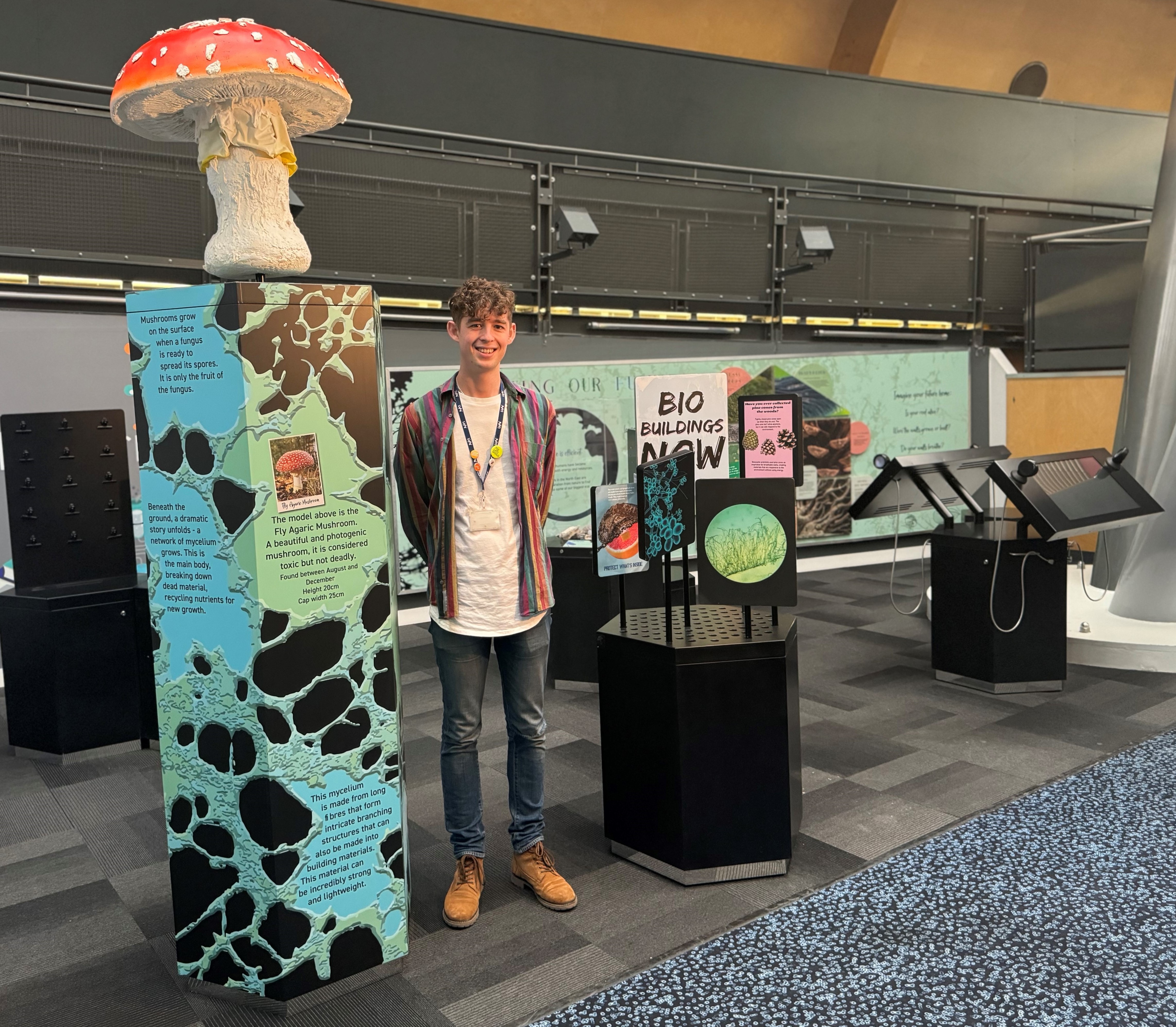Discover breathable walls that can open and close like pinecones, lotus leaves that could hold the key to self-cleaning windows and walls that could be built out of fungi, in a fascinating new selection of exhibits at Newcastle’s Life Science Centre.
The new Growing our Futures exhibits spotlight how local scientists and researchers are taking inspiration from nature and forging ahead with research to tackle global challenges in a sustainable way.
This is the latest showcase for the Science Now! Hub, which highlights different areas of cutting-edge research taking place in the region, to explore contemporary science through displays, interactive activities and quizzes.
Visitors will have the chance to see how fungi could grow within knitted structures to one day replace concrete, breathable walls that are responsive to the environment without using energy, and insulation for homes inspired by dragonfly wings. They will also find out how lotus leaves have the potential to replicate waterproofing on everything from car windscreens to hospital surfaces.
Ben Rutherford-Orrock from Life, said: “Nature has always been our greatest teacher and is incredibly efficient in its use of both resources and energy. These new exhibits will showcase the amazing science and engineering that is harnessing nature to come up with innovative new materials and also help reduce waste.
“The possibilities are endless from creating leather-like fabrics from fungi, which could repair themselves, to non-cuttable materials that take the inspiration from the strong structure of abalone sea snail shells!”
Growing our Futures aims to be thought-provoking for visitors, challenging conventional ideas and encouraging people to consider options like whether they could live in a house built from fungus!
Professor Lidija Siller, from Newcastle University, added: “During our research we realised that dragonfly wings are made out of aerogels, which are solids made from gels, but the water is removed and replaced with gas. These can have many applications, including thermal and acoustic insulation, due to its highly porous and lightweight structure.
“The fact that a dragonfly can make these aerogels at room temperature and at atmospheric pressure, led us to replicate this process to establish a low energy, low-cost method to produce aerogels.
“That research has now moved on and Dragonfly Insulation, based in Low Prudhoe, is currently scaling up this process of making aerogel powders for insulation, giving this research real world impact.”
Meanwhile Newcastle University PhD student Emily Birch, who has been involved in research looking at breathable walls based on replicating the process a pinecone uses, added: “It’s no wonder that we look to nature for research inspiration; essentially we are accessing 3.8 billion years’ worth of evolutionary trial and error!
“The new exhibits at Life highlight how nature works in a sustainable way, minimising resources and the impact on the planet, which is something we all need to aspire to.”
Growing our Futures will open in the Science Now! Hub, when the science centre reopens on Saturday 10 February and is part of a wider programme of changes and updates within the centre.
Life has been independently rated best in England for visitor experience, ahead of destinations including the National Portrait Gallery, London Transport Museum and Bletchley Park. Life scored 100% in many areas including quality of activities, experiencing a sense of discovery and inspiration and making visitors feel valued, to achieve the prestigious accolade from global benchmarking company BVA.

